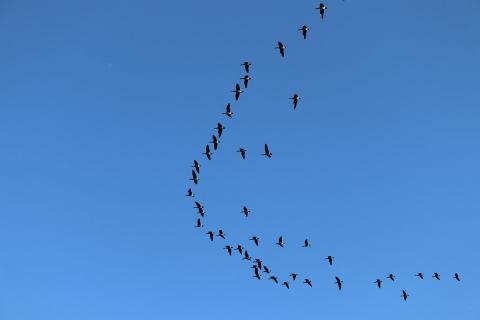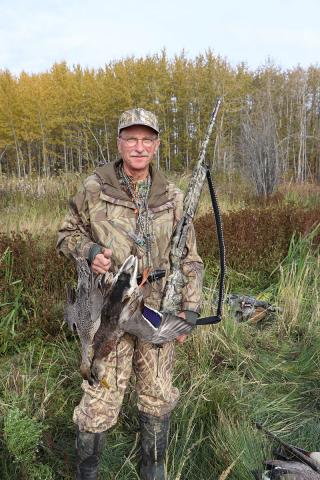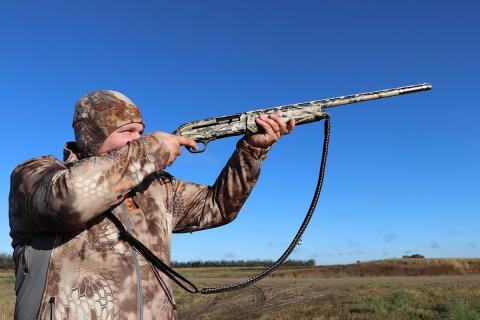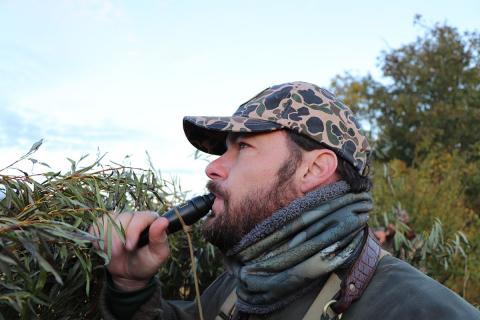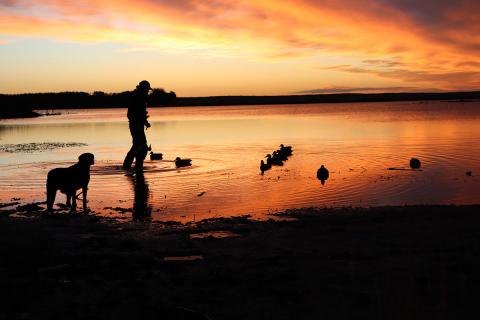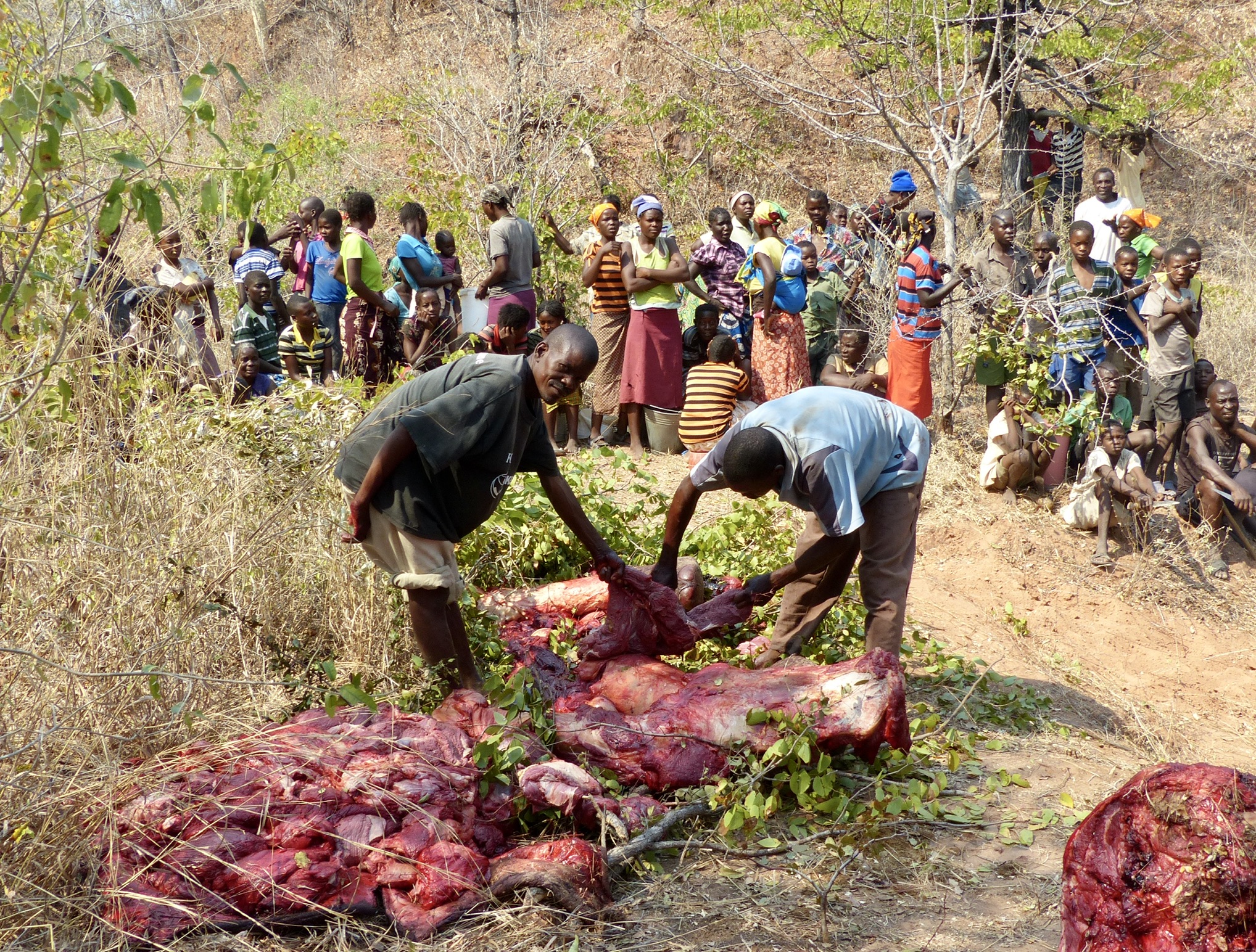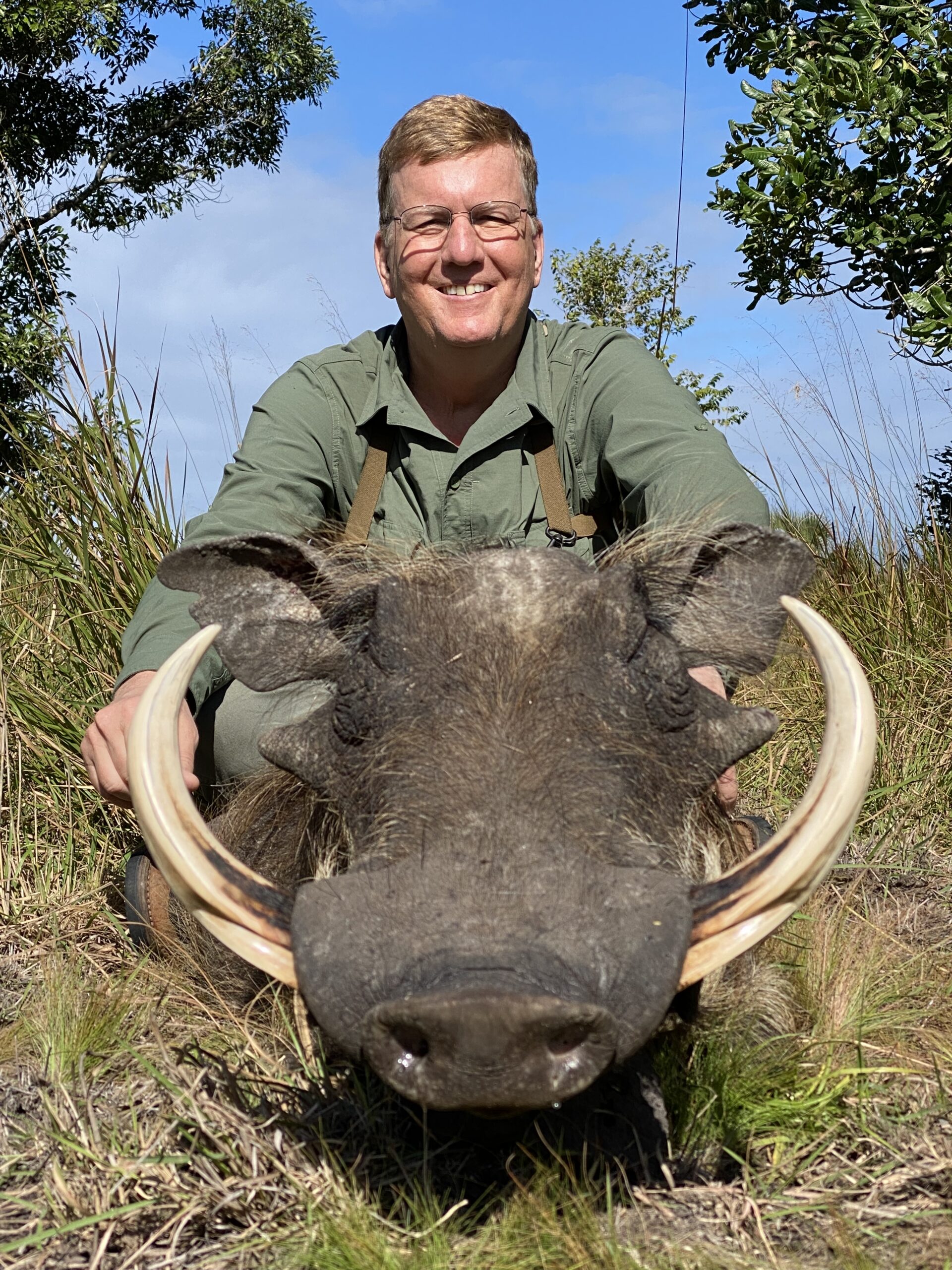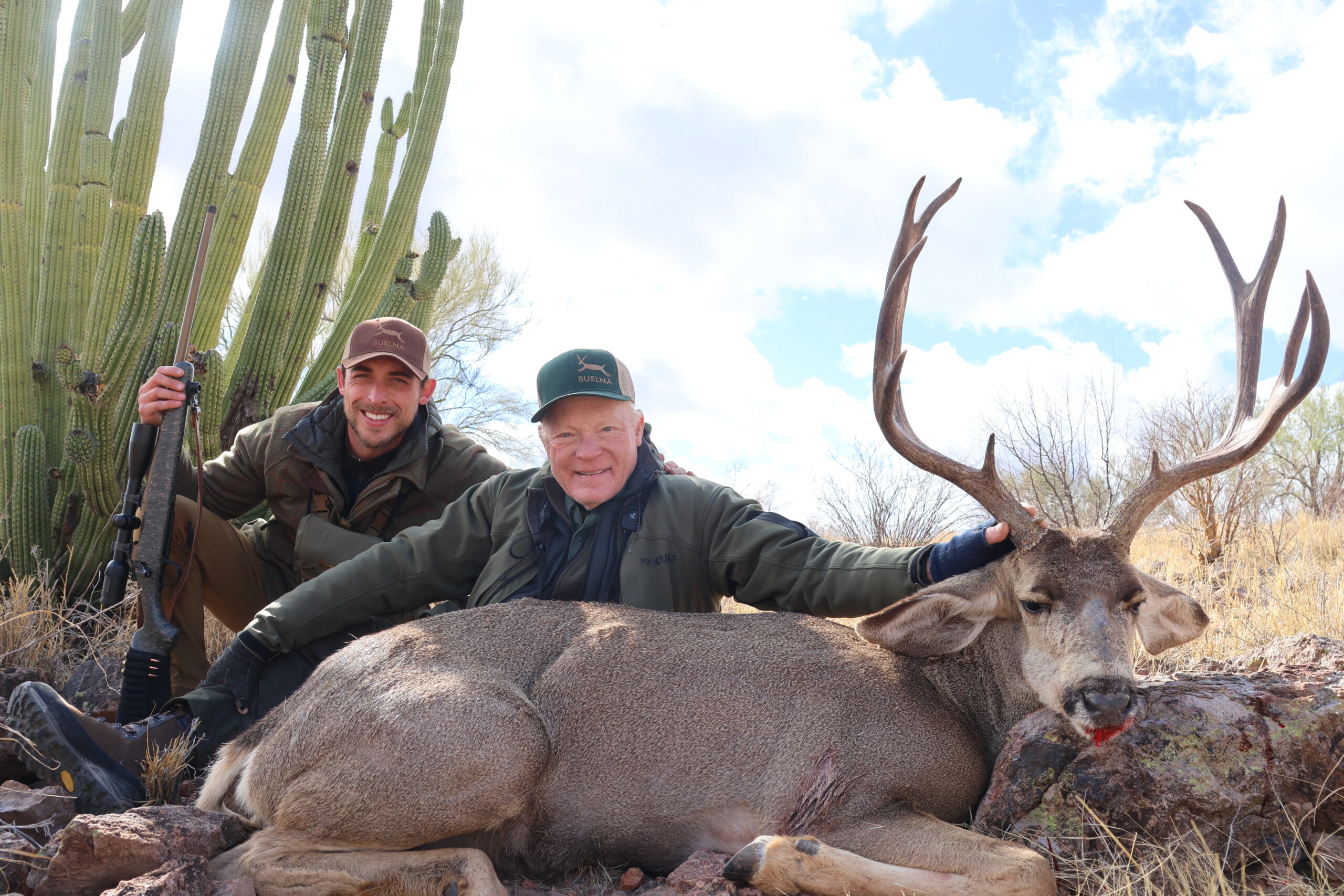Sunrise destiny in Saskatchewan with Sure-Shot
The actual hunt may be the central activity that ties all forms of hunting and types of hunters into a culture that defies time and distance. Within the various circles of hunters, however, are many different lifestyles. All share a common human bond and oneness with nature.
Charlie Holder of Sure-Shot Game Calls not only understands those critical dynamics, but each year puts together a waterfowl hunt that celebrates them. It celebrates the hunt while focusing on the hunter.
Although I was on one of Charlie’s annual bird safaris to Saskatchewan a number of years earlier, that was before Safari Club International developed its Birds of the World program. So, when Charlie said he was returning to Saskatchewan for the sixth edition of the event last year and asked if SCI would be interested in attending, the answer was affirmative. It would be another way to focus on SCI’s Birds of the World program, as well as on a piece of paradise called Saskatchewan.
This past year’s expedition was for sandhill cranes, geese and ducks.
Saskatchewan is a fascinating place and it was beneficial to have representatives from Tourism of Saskatchewan on-hand to answer questions about all of the hunting and fishing opportunities there and to learn more about their efforts to let the world know just how great a place it really is.
The location for this hunt was an hour’s drive or so out of Saskatoon, which means a northern prairie setting where birds abound. It was late September. Temperatures dropped to almost freezing at night and into the 60s during the day. Perfect for the several objectives of the annual Sure-Shot expedition. Call it a Waterfowl Safari, if you wish.
Essentially, the Sure-Shot expeditions put writers from throughout the shooting sports industry together with representatives of sponsors in real world settings where the merits of the products, gear and services can be seen and discussed in field settings.
But because of the kinds of places involved, these forays also happen to be able to take a look at hunting in different countries, as well as in different surroundings.
Presenting sponsors for the expedition were Remington and Polaris, with supporting sponsors Northway Outfitters, Tourism of Saskatchewan, Vortex optics and MEC Clay Throwers. Irish Setter boots was the product sponsor.
Media representatives included Branden Bunch, UTV SPORTS; Ben Cole, Red Dirt TV; Brad Fenson, Brad Fenson Outdoors; Jeff Fuller, Sporting Dog Adventures; Lindsey Hayes, Destination Polaris TV; Skip Knowles, Wildfowl; Luke Lester, Dirt Track TV; Hollis Lumpkin, Women’s Outdoor News; Ron Peach; American Waterfowler; Edward Pierz, Outdoor Hub; Ron Spomer, Ducks Unlimited; Paul Wait, Delta Waterfowl; Shawn Wozniak, Sporting Dog Adventures TV and the author.
Buddy Graham and his group at Northway Outfitters are well-known for their premier trophy whitetail and mule deer operation. But Northway, established in 1988 and in cooperation with Cabela’s Outdoor Adventures, operates on provincial and First Nation lands, which have roughly a million acres of bird area. This is where huge numbers of waterfowl see the first part of their migration through this area each year. Kind of like heading them off at the pass, so to speak.
None of this would have taken place, however, absent Charlie Holder, the main organizer of the event. With him from Sure-Shot Game Calls were Alan McClain and Justin DeYoung.
Charlie’s a personable Texan who understands the shooting sports industry and its customers as well as anyone can. He has a sense of tradition that doesn’t get in the way of innovation and possesses the kind of respect for nature found only in truly hard-core hunters.
Given all of these factors, it might be difficult to imagine a way to hike the fulfillment factor much, but it was. Media folks were taken to various likely spots at or near bodies of water and then left there alone in many cases.
This accomplished a couple of things not present on a lot of media outings. First, it results in the writers and editors from the various communications operations to get to know each other much better (we mostly know each other anyway, but it is different when we share blinds without guides and have to come up with strategies on the fly – literally).
Charlie made certain that we were each armed with a necklace full of Sure-Shot game calls, even though the abilities of some media folks to use them effectively was evident, while with others it was not even suspect – some couldn’t call home from a duck blind, to be blunt (I resemble that remark).
But, by being forced to make do, it is amazing how quickly some figured out ways to make noises that at least don’t scare the fowl away.
That’s the way it was for Ron Peach from American Waterfowler and me on a few occasions. I had not met Ron before this expedition, although I have known his publisher for years – both in the US and in Africa, but that’s another story.
Ron’s a great guy and a serious waterfowler. When he writes about waterfowling, take heed because he knows of what he writes – not some flamboyant hotshot, but a rock-solid, hard-core hunter. We had some great times, sharing experiences when we weren’t shooting at birds. And not a lot of birds got away.
During the course of the hunt, the group ended up taking about every kind of duck and goose in the area, as well as a healthy number of sandhill cranes.
There is something about sandhill crane hunting that is different, even though the tactics and routines are similar to other bird hunts.
Maybe it is the way sandhills seemingly can be deathly silent. Or maybe it is the way they visually scout an area from the air before committing.
Perhaps it is their size, and definitely one factor is the way they look after being hit in the air – like a lawn chair falling from the sky. I guess it is all of those things, and more. And the real payoff is that they are some of the tastiest game birds in the world.
For this expedition, both guns and ammo were supplied by Remington.
We used two different models of 12-guage semi-auto: V3 and Versa Max. Although there are numbers of differences, the most noticeable is that the V3 shoots shells up to and including the 3-inchers, while the Versa Max shoots shells as long as 3 ½ inches. We used only 3-inch ammo on the hunt.
In recent years, I have had occasion to shoot all manner of semi-auto shotguns that are what might be termed MHS (Modern Hunting Shotguns as compared to MSR, Modern Sporting Rifles and MHR, Modern Hunting Rifles). Basically, for shotguns this means they have some kind of non-ferrous receiver, synthetic stock, are not shiny and incorporate modern/exotic finishes, etc.
While watching the clouds of birds in the air on this trip, I had flashbacks of hunts at Remington Farms on the Chesapeake Bay in the long ago. Those semi-auto Remingtons were the 1100s, with their steel receivers, wood stocks and shiny finishes. Pretty guns.
There truly has been a quantum change in waterfowling shotguns over the intervening years, even though most of the differences don’t matter at the moment of the shot. They matter a whole bunch before and after the shooting, however.
These new MHSs take much less maintenance (don’t have to worry about rust ruining the bluing) and their systems are quite reliable.
During the course of the multi-day hunt, I had an opportunity to use both models and can see where each fits into the grand scheme of things, although such a realization might not be apparent by osmosis.
The V3 is a bit lighter and is more alive in the hands. Yet the Versa Max is ready to do the heavy work and handles quite well in the blind. They both worked well and brought birds to bag, so there was no quantitative difference in that regard that I could sense. Overall, the V3 seemed handier, but it also delivered a bit more perceived recoil (logical because it is lighter).
We used two different kinds of ammo on the hunt: Hypersonic Steel and Nitro-Steel loads, with No. 2 and No. 4 shot in both kinds. The Hypersonics sent 1 1/8-ounce of shot out at 1,700 feet per second, while the Nitro-Steel loads sent 1 ¼-ounce of shot out at 1,450 fps. I preferred the Nitro-Steel loads because I could not discern a performance difference that justified the added perceived recoil of the Hypersonics. Others on the hunt liked the Hypersonics better. Bottom line: both types did the job quite well.
On the hunt, we took 11 different kinds of ducks, sandhill cranes, both big and small Canada geese, white-fronts and snow geese. Ducks included mallards, pintail, widgeon, gadwall, green-wing teal, blue-wing teal, shovelers, redheads, scoup, bufflehead and ringneck.
Shots ranged from close to far. Although I used both the No. 2 and No. 4 loadings in the Nitro-Steel, I found no disadvantage at closer ranges by using the No. 2 shot, and that it definitely was an advantage when the distance increased. Hence, by the end of the hunt, I was using just the No. 2 shot loads and doing well at all distances.
There was ample opportunity on the hunt to put the Polaris off-road vehicles through the paces, including a chunk of one day covering a lot of ground in them, even putting them through their paces in mud, on hills and over rough terrain. Put bluntly, we literally drove the tires off of them. Lot of fun and they worked great.
During a midday break, it was time to blast away on an impromptu sporting clays setup, of sorts, with the MEC trap machines. Great fun with both target ammo and some of the waterfowling loads.
For anyone who enjoys waterfowling, Saskatchewan is definitely a province to consider because during the early season when the weather is nice and the birds are there in great numbers, it offers some of the best sport imaginable.
Traveling hunters might consider starting there in the early fall and working southward through the fall seasons, all the way to Mexico by the dead of winter. Why not migrate with the birds? And then the following summer, start way south in Argentina or Uruguay and work northward? Similar north/south/south/north extended bird hunting trips also can be done in Europe and Africa. Throw in the vast wingshooting areas of the former Soviet Union and truly, the Birds of the World concept takes on a whole new meaning.
For information about SCI’s Birds of the World program, call 1 520.620.1220 option 5.–Steve Comus

